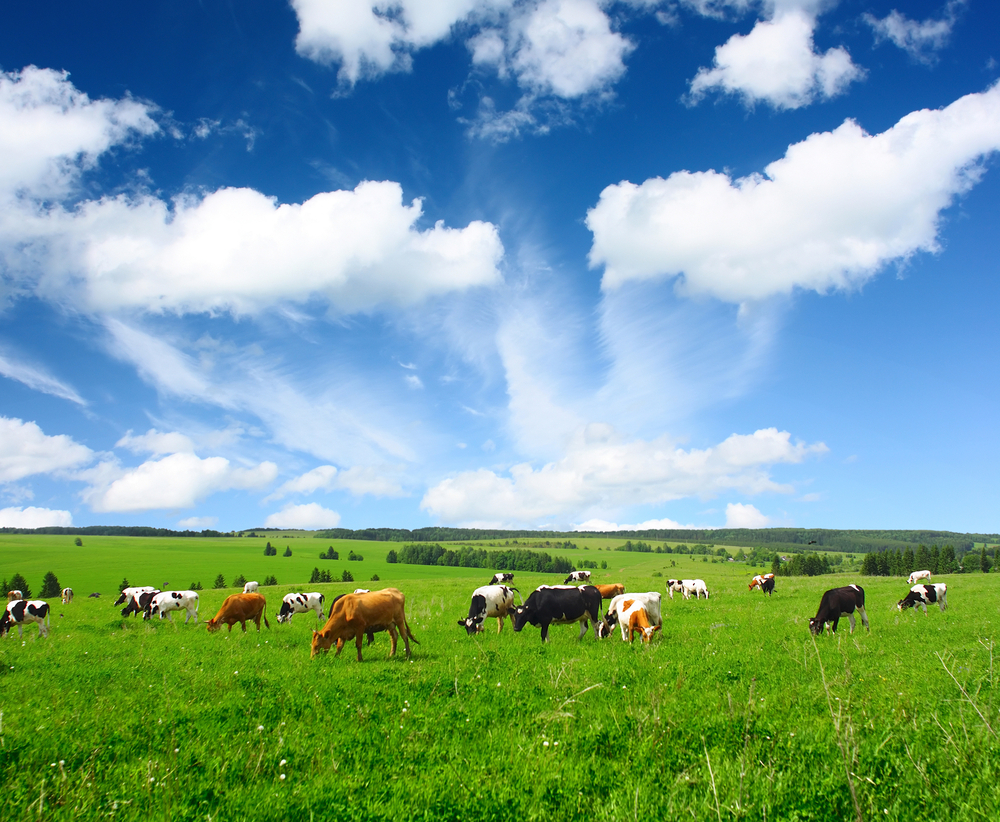What Is Your Food Eating?

If you have kids, you probably worry whether or not they’re getting the right nutrients. You might worry about your own nutrition, too. So you choose what you think are the right food groups and serve balanced meals.
But that’s where it ends for most Americans. We simply don’t have the time to dig deeper. We don’t have the time to worry about where our food gets its nutrients.
Funny to think about it that way, isn’t it? But whether it’s a tomato or a hamburger, the food you're about to eat once needed nutrients to maintain its health and survive. And now its job is to support your family’s nutritional needs. The question is this: Do you think the way it was nourished will make a difference to your health?
A recent Oregon State University study found that it may. Researchers fed 10 pregnant cows different amounts of flaxseed, up to 7 percent of their daily diet, to pinpoint the optimal amount needed to increase their milk’s omega-3 content. At six pounds of flaxseed daily, the saturated fat in the cow’s milk dropped 18 percent, while polyunsaturated fatty acids and omega-3 levels rose drastically. In fact, the cows produced milk with 70 percent more omega-3 fatty acids than bovines that didn’t eat flaxseed. Similar levels of polyunsaturated and omega-3 fatty acids were found in the cheese and butter produced from this milk.
Flaxseed is more expensive than grass, grain or corn, so if this practice goes mainstream, expect to pay a premium for any dairy products that come from flaxseed-eating cows. For now, this study serves as a good example of how important it is to eat food that has been well nourished.
Here are some tips to help make that happen.
• Beef. Grass-fed cows usually aren’t jacked up with steroids and antibiotics. They also tend to get a bit more exercise than their grain-fed counterparts. Because of this, they tend to be leaner, which means they have less saturated fat. Healthier for the cow. Healthier for you.
Get the world’s most fascinating discoveries delivered straight to your inbox.
• Produce. Buy local! There is some conflicting evidence about whether or not organic produce contains more nutrients than non-organic, but nothing compares to buying a tomato picked ripe from the vine. When you buy produce from a grocery store, it may have spent as much as a week in transit. Which would you prefer?
• Price. Buying local produce from the grocery store can be more expensive than buying produce from faraway sources. And grass-fed beef is almost always priced considerably higher than grain-fed beef. Sometimes you can get a great deal by buying local, especially in season. This is particularly true if you buy directly from the source. If you can, buy your food at farmers markets' or from the farm itself.
Healthy Bites appears on MyHealthNewsDaily on Wednesdays. Deborah Herlax Enos is a certified nutritionist and a health coach and weight loss expert in the Seattle area with more than 20 years of experience. Read more tips on her blog, Health in a Hurry



